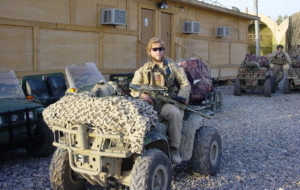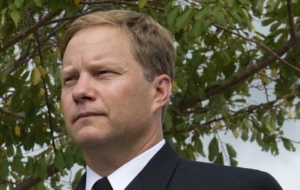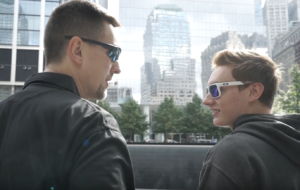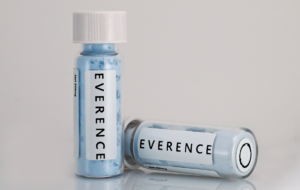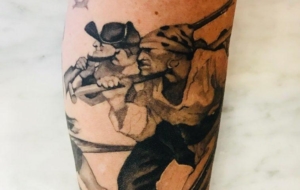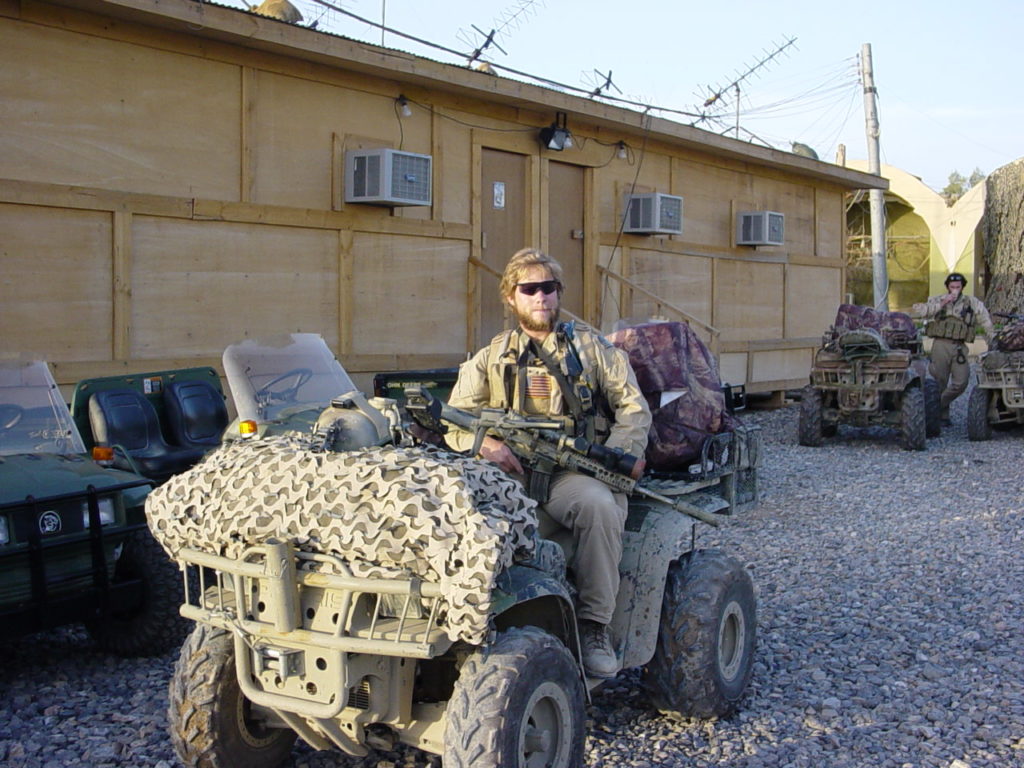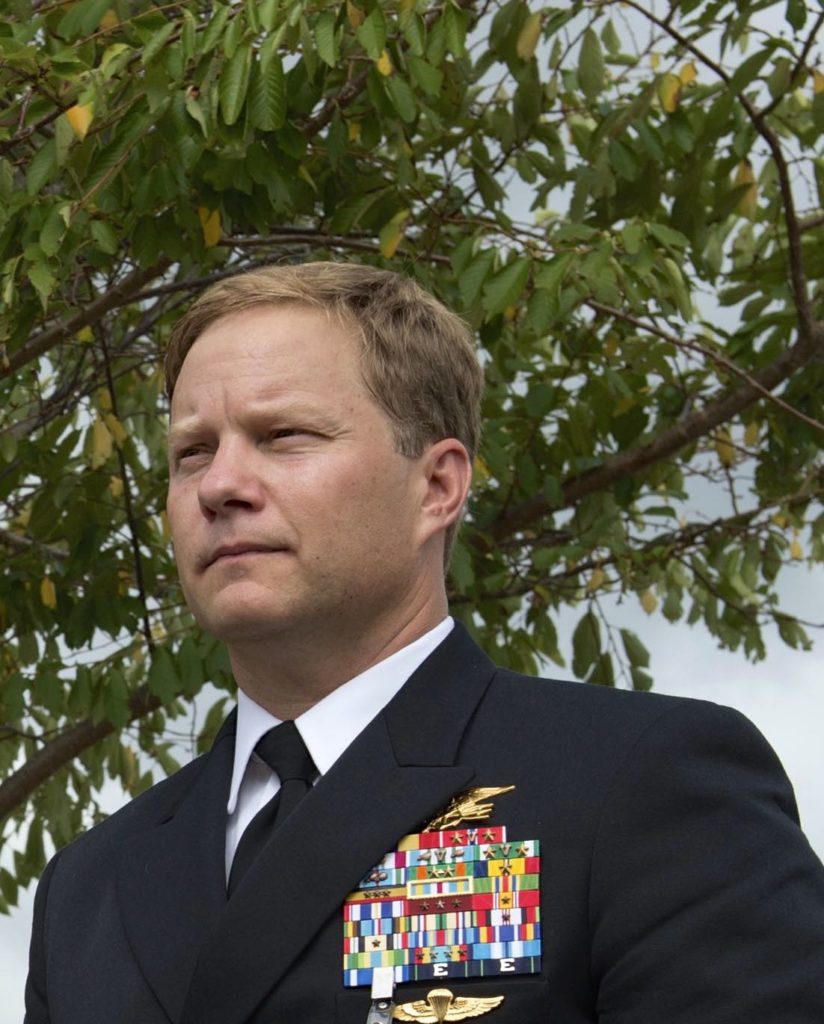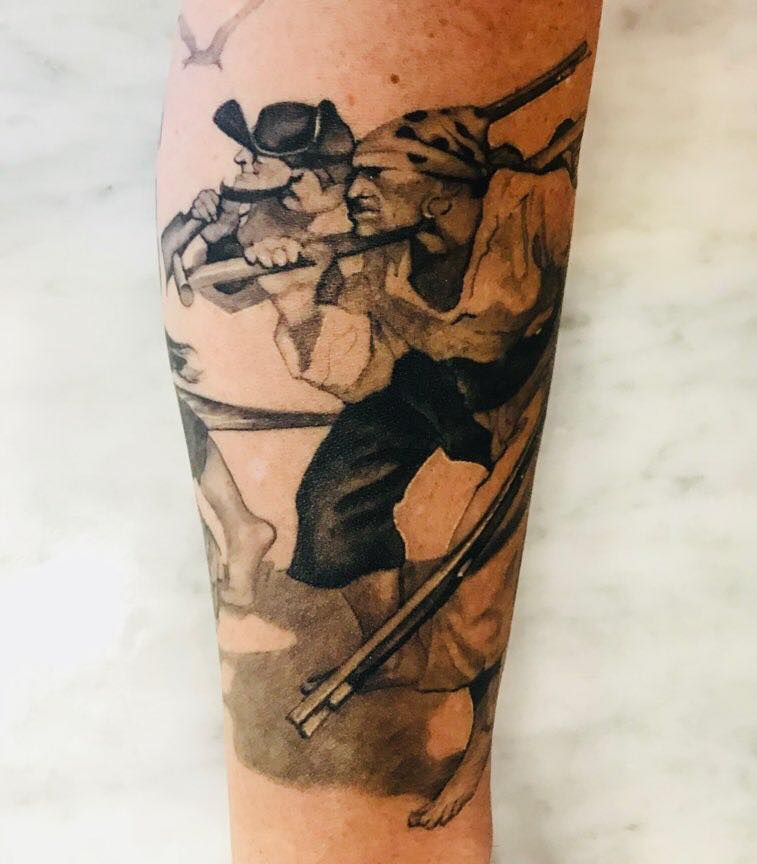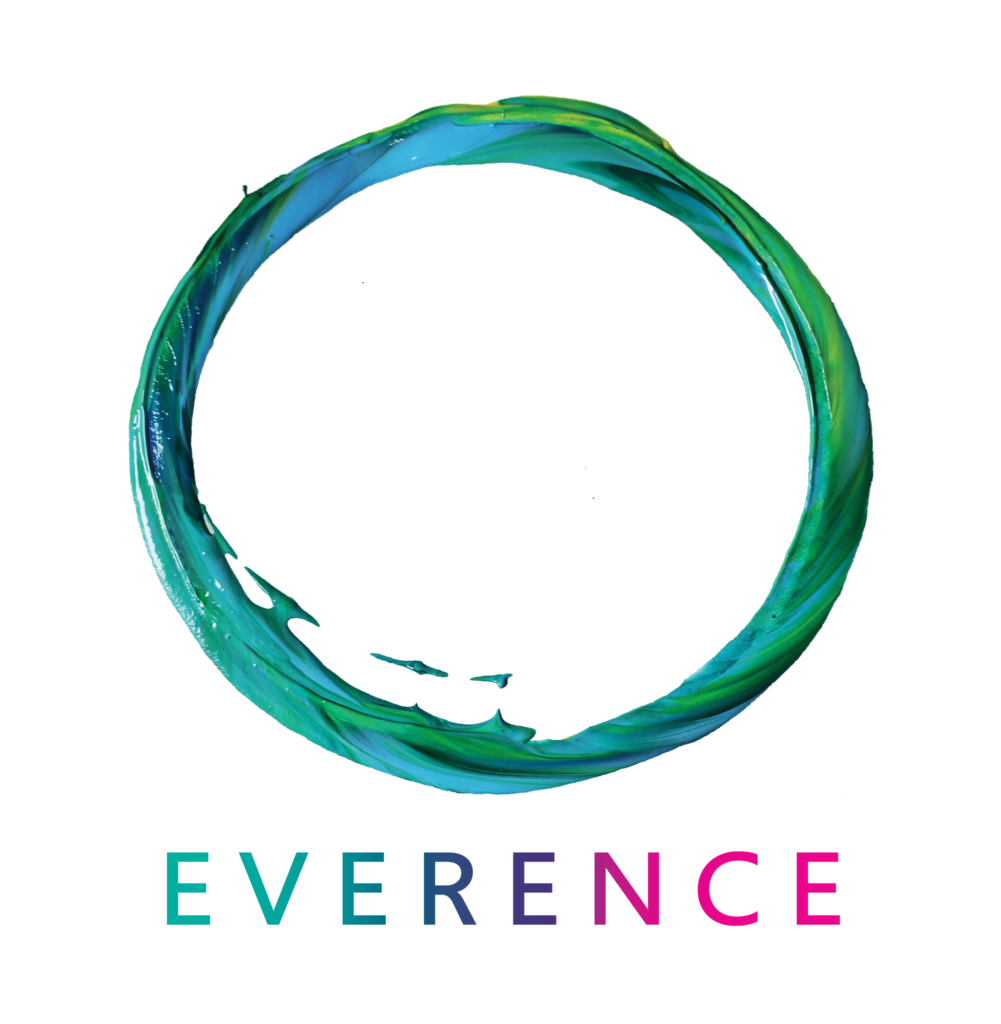
About ENDEAVOR LIFE SCIENCES - EVERENCE
Through EVERENCE, your ability to permanently connect with those who inspire you is about to change forever. EVERENCE is a patented technology that allows you to add DNA from a loved one into any new or existing tattoo.
ABOUT BOYD RENNER
Please describe your service to our country (years in service, rank, deployments, etc): Renner spent 28 years in the Navy, serving in DEVGRU for an astounding 23 of those years. He first joined the Navy in 1988. A friend of his signed on before him so he figured it couldn’t be too bad. While waiting in the recruiting office, he saw an “All Hands” Navy magazine. It was a Naval Special Warfare Edition and it looked better to him than sitting on a ship or submarine for 6 months at a time, so he told recruiter that’s what he wanted to do.
When he joined the Navy, Renner had never seen the ocean or shot a gun. After going to boot camp, he attended aviation electrician school, but he still had BUDs in mind. The proctor of the school told him if he graduated second in the class, he could have a shot at BUDS, so that is exactly what Renner did. He relays that back then, there was no pre-training for BUDs. 130 started in his class and at this point, Renner had never swam in the ocean before. He recalls that his 3 roommates at BUDS were the most fit individuals he had ever been around. 2 were football players from the Naval Academy and 1 was a wrestler from Pennsylvania. Because they thought he would quit, they never invited him out or talked to him.
The first test was a 50-meter underwater swim. To Renner, that didn’t seem too hard – he just decided he wouldn’t come up for air. Although he says it sucked, he made it through. However, both of his roommates from the Naval Academy quit. At this point, the wrestler started talking to him. A couple weeks later, the next test came. With feet tied together and hands fastened behind their backs, they were thrown in the pool and taught how to relax. Renner didn’t think it seemed that hard, but the wrestler now quit so he then had the room to himself. Only 16 graduated from the original class of 130.
Immediately following BUDS, Renner attended Army jump school at Fort Benning. He says they had just been told they are the best in the world, but the Army didn’t want to hear it, so they had to come back down to earth, so to speak. His first assignment was to Seal Team 2 in VA Beach where he did one Mediterranean cruise, specialized in Winter Warfare, and also deployed in support of the first war in Sarajevo. Among many schools over his career, he volunteered for Seal communicator, sniper school, survival schools with winter warfare, pistol and rifle schools. Then, he heard about Naval Special Warfare Development Group. This sounded like the next step so he interviewed and was selected after 6-8 months of selection. Once in DEVGRU, he became lead climber in his element. Renner spent the next 23 years of his career with that unit. He made it from E5 to E9, then on to W3, and finally retired last year as a W4.
He now serves as the co-founder of Endeavor Lifesciences, an employee of a government contracting firm, and a student completing his Masters at Penn State.
Out of the hundreds of missions on which Renner served, he is most proud of one where he never fired a shot – Operation Red Wings 2. He explains that it all started when his pager went off and he responded to a room where there were flat screens on the wall. The first thing he saw was a predator feed of something burning on the side of a hill and he knew it was probably one of ours. It was a rescue helicopter going in after Marcus Luttrell’s sniper team and it had taken a rocket. At that time, they didn’t have a lot of intel. From there, he flew to another base where they planned all night to insert. First out the back of the helo were he and his sniper buddy down a 120-foot fast rope. When he put his goggles down, the pine trees were higher than their CH-47 and the blades were actually hitting trees. Each Seal was heavy with equipment and they landed in a heap, knocking off his NVG’s. They cut the rope and it became eerily quiet after the helicopter left. Looking around, he noticed probably 15 other ropes rotting away on the ground where other teams had inserted over time. His immediate thought was that they really were in someone else’s backyard and our guys have been here before. After setting up a perimeter, the Rangers came in behind and they all started patrolling toward the crash site. At this point, additional Seal, SF, and Ranger elements joined. Renner recalls that they knew what they had to do and it wasn’t going to be pretty, but it wasn’t until he started smelling the burnt wreckage, fuel, and the trees that caught on fire that he realized they were about to walk up on 20 or more of their brothers and figure out if anyone was alive. If not, they had to get them home.
Renner explained that when the original Operation Red Wings helo was getting ready to land, they took an RPG in the back. The boys had already stood up and unclipped so at that point they’re just holding on. When the helicopter started spinning, it put a lot of his brothers right out the back as they were getting ready to fast rope and the crew and pilots were all hooked inside. Renner praised the Rangers as being heroic in every way manning the ridgelines with their heavy weapons. He and his team were there with the PJ’s and CCT’s and they had to figure out how to get their fallen brothers from about 2,000 feet below them to the top of the ridge so the helo could land. It was the hardest thing he has ever done – way harder than Seal training – but it was the right thing to do and he wouldn’t change it for the world.
Explosives had to get dropped in so they could create a landing zone at the top of the hill. A day or so into it, they knew everyone was missing from Luttrell’s team but figured out someone remained alive because of the IR signals they were receiving. Renner and his team were taken off the duty of the crash site and given a map of where the survivor might be. He said getting to it would be like climbing to the Everest base camp twice. His team only thought they were going to be securing the crash site so they hadn’t brought many supplies along, just standard water and food. After the first day, they were already out of water. They walked as far as they could, jackets and gear ripped up, freezing at night. 2 maneuver elements and a Ranger Team went the opposite way to look for Luttrell. Over the next 4-5 days, his Team would walk and investigate. He recounts it was hot during the day and freezing at night. Resupply drops were attempted but missed. They were still confused on who was alive or not so it was chaotic. Meanwhile, everyone was down at the loss of life but hoping they could find some guys alive.
Then they received intel that Luttrell was located at a village. This information came from a note Luttrell wrote which had been hand delivered to another village so they knew it was him. The Rangers and the Seals started converging on his location and the Rangers made it before them. Renner’s team got the news that Luttrell was safe and got orders to go back to the crash site which they had just walked 5 days away from to start looking for the others. Then the decision was made that they needed to find the guy who shot the helo, so they extracted and went back to the Naval base outside of Kabul to wait for intel. They ended up getting him without his Team’s help.
Renner then engaged in the painful process of doing services for the guys they lost and getting them home. He said there were guys up on the hill at the crash site working for 2-3 weeks before it was over. He will tell that story until the day he dies because he was proud to bring all those guys home so their families can now visit them at Arlington or any other cemetary and that is important to him. It was a heartfelt mission: “We don’t leave anyone behind.” Renner only realized afterward that for weeks, all of his unit’s families and the Rangers’ families had no idea it was not their loved ones missing because all comms went silent after that beeper went off. He reflects that is was a painful time for all families involved.
Renner says this war for SOF is a long fight. He did 10 tours in Afghanistan and 2 in Iraq and felt blessed to be around the most solid heroes for which he could ever ask.
When did you retire? 2016
Please describe what the SOF brotherhood means to you: Renner explains that a tribe is an environment where people understand the culture, communication, the way people act, and the way people feel. You see that everywhere you go, people stay connected to what they understand and what they know. In every society throughout history, man has tried to be part of a tribe. We are genetically made this way. It is within a tribe that we can understand the way people act and feel. SOF is that to a “T,” as is the military in general. These men are on the same mission, have been through the same training, speak the same language, know all the same acronyms, and ultimately stick together. Everyone is genetically wired to walk out the door every day and subconsciously walk toward that tribe, whatever it is.
How has the transition from warfighter to civilian gone? Brenner reports that this transition has gone well. He attributes this to immediately joining a new tribe in Endeavor Lifesciences. When he left, he was the longest serving member in that unit. When retired, turned in his badge, and was escorted out of the building – in those moments – it sank in that the mission is bigger than yourself. He describes this as a slice of humble pie. The Team cares you were there and appreciates your contribution, but ultimately it keeps going.
He has now joined a new tribe that is very different and feels he lucky. Renner believes it is a challenge when military veterans don’t find a new connection – when they are sitting in their living room by themselves, filling out their resume. That is when people tend to get in trouble with issues like suicide and depression. He would like to promote the idea for veterans to start the process of finding their new tribe before they even get out of the military so they don’t have time to ponder what they used to be. Instead, they move right along to their newfound circle.
What is the name of the business you started? Endeavor Lifesciences is the name of the company and Everence is the product. They have patents covering everything they are doing, but are focused primarily on the encapsulated DNA at this time. This science enables a person to put encapsulated DNA into almost anything – a painting, on the mantle, even around their neck.
When did you start it? Patrick Duffy started the company. He was taking wounded warriors and gold star families diving. While in Key West, he saw a woman swim by with a Navy Seal tattoo. He thought about how he could turn a tattoo into a reliquary to make it even more personal. Duffy spent the next 3 ½ years figuring out how to do this. Renner was brought on more than a year ago as co-founder.
Please describe your products/services: Renner is excited to put out a product that has never been available before. The product is called Everence and the name is a cross between “forever” and “reverence.” Everence is a way people can stay emotionally connected to what is important to them or what motivates them. Endeavor Life Sciences has patented a way to add DNA safely to a new or existing tattoo or skin. When asked why, Renner explains that he has been away from his wife on deployments for half their marriage. Renner’s wife is his hero. She has Cystic Fibrosis, retaining only about 50% lung capacity. Despite this, she runs marathons, half marathons, and Spartan races. Upon waking, she knocks out an hour and a half of breathing treatments and goes to bed at night after an hour and a half of the same. He recently got her DNA encapsulated at the micron level and will now take her Everence and add it to his first tattoo. Renner says this is a way to have her with him long after she’s gone.
He believes this product will resound with military guys who travel, for example, away from their little daughter for a year tour and want a way to carry a memory, experience, or that person with them via tattoo, which is a very emotional thing anyway. People get tattoos for 2 reasons: emotional connection or personal expression. Everence has been featured in the New York Times, Forbes, and Inc. His company has patents to encapsulate sand, soil, and sea water but for now, they are focusing on DNA.
Renner says his second tattoo will contain encapsulated sand from the crash site at Operation Red Wings. He took a handful of sand from the site when he loaded up the last body. This will be in the second tattoo he plans to get – a set of dog tags with every man’s name he carried up the mountain. He knows it will be very emotional. Renner’s hope is that Everence will help people dealing with demons or away from family or just tired of dropping their child off at soccer practice and not being able to watch them. It is a connection. Everence can even change the way people look at events such as knowing someone is sick and coming to end of their journey to start a new one. Blades of grass from the top of a gravesite, for example, have DNA.
One of Renner’s heroes, Brooklyn Police Officer Terry O’Hara, had cancer as a result of 9/11. 4 days before O’Hara passed away, Renner asked for his DNA because he knew this hero was going on his next journey. O’Hara’s brother said that request gave him a gleam in his eye and he knew O’Hara felt relieved that a part of him was staying behind. So Renner’s third tattoo will have O’Hara’s badge and the Everence because Renner wants to remember him forever.
Where is it located? The lab is in Quonset, RI, and they have offices in VA Beach and Manhattan as well. Their brand ambassadors, including 4-5 Seals and fitness personalities like Ashley Horner, are located all over the world.
What does this company mean to you/why is it important? Everence helps people connect. Renner feels passionately that people are their best when they are connected to whatever inspires them. In this world that is rapidly changing and where things are instantaneous, Everence takes everything back to its roots. When people ask themselves what inspires them, if it is their 2 kids, then it is a great way to stay connected. Everyone in the world is looking for connection, and Everence provides that.
What have been some challenges as an entrepreneur? 1) Learning the corporate language. Renner says that in his 28 years of Special Operations, he understood the acronyms, the language, and the mission. The second you’re out, however, you have to realize you’re not the expert anymore. 2) Selling yourself. He has never had social media and now has to for business purposes. He cannot talk about missions or tactics, but says you must focus on your career or where you came from to sell to investors.
What is the best part of being an entrepreneur? Renner gets to wake up and do something that has never been done before and it is challenging. Everence could be the next Facebook, Air B&B, or Uber because everyone has something that inspires them.
How did your SOF career prepare you for what you are doing now? (In what ways have you drawn on your experiences as a SOF soldier in your business life?) In Seal Teams, you are used to trusting those around you and realizing that if you surround yourself with experts in field, you don’t have to be good at everything. Communication is also vital. In the military, you also have to be flexible with people being late or early or things not going according to plan. The same is true of the flux in the corporate world. You just have to go with the flow.
What do you offer the consumer not only through your business, but also through your expertise as a SOF Veteran? Renner offers honesty and integrity. In every process with the saliva collection kit, Endeavor Lifesciences maintains the highest possible standards. From the moment you purchase the kit to the time the sample comes back, the company treats your private, personal DNA treat with respect and confidentiality. Renner ensures that everything in the supply chain is performed with excellence so there is no chance of mistake.
Who has influenced you as an entrepreneur? Renner listens to The Masters of Scale podcasts featuring the owners of Microsoft, Uber, etc. He explains that these are the people who have gone before and tried to figure out how to scale businesses in a similar manner.
Family? He is married to his hero. She has Cystic Fibrosis and what she deals with every day, such as breathing treatments, is not easy. Despite these hardships, she runs marathons, Spartan races, and works out at the gym.
Why do you live where you live? Renner and his wife live in VA Beach. After retiring there, he feels no desire to leave. They’ve lived in the same house for 25 years and he’s not looking to change that.
Favorite food? Indian food
Favorite place in the world? Norway because of the people, culture, and environment. He also loves Costa Rica with his wife.
Favorite movie? “Legends of the Fall.” Renner identifies with this movie because he has 3 brothers and they grew up in Colorado, which is similar to the Montana setting of the movie. One of his brothers is a Seal and another is an SF boat driver.
Favorite book/books? Ken Follett books. He has read “Pillars of the Earth” 2-3 times. Another title he enjoys is “From Sea to Shining Sea”
Pets? 3 rescue cats, 1 rescue dog from Hurricane Katrina, an inherited bearded dragon, and fish
What do you like to do in your spare time? Renner is completing his Masters with Penn State, so free time is not plentiful. When he does have time, he enjoys paddle boarding, working out at the gym, swimming, and lift weights.
Words you live by (ethos)? “Wake up every day and try to make yourself and everyone around you better.” Renner urges this habit, even if it is something small like listening to a podcast or reading.
